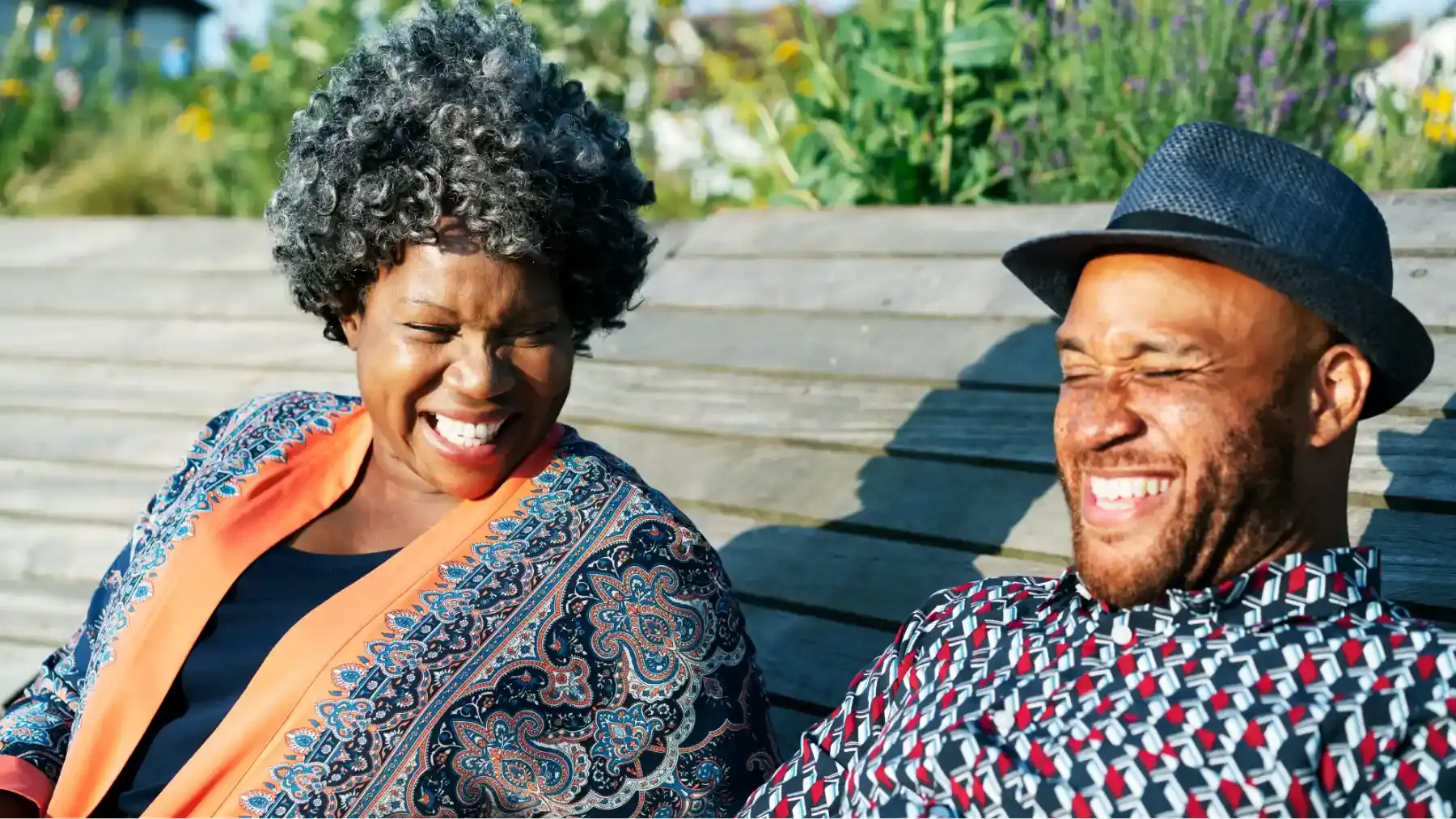What Is Periodontitis? Causes, Symptoms and Treatments
If you’ve been diagnosed with periodontitis (or advanced gum disease), you’re not alone: over a billion individuals worldwide are diagnosed with periodontal disease each year.1 Still, this gum infection remains a mystery to many, especially if you don’t know what the early stages of periodontitis look like.
So, what exactly is this gum disease, and how can you treat it? Read ahead for everything you need to know about periodontitis.
What Is Periodontitis?
Periodontal literally means “around the tooth,” and refers to the health of the gums and bones that support your teeth.
Periodontitis, then, is a chronic inflammatory condition that leads to mild, moderate, or severe destruction of the supporting tissues around teeth.
As advanced gum disease, periodontitis is more severe than gingivitis, and typically results when a case of gingivitis is not properly treated. Two main features of periodontitis are gum recession and bone loss around the affected teeth. Untreated, periodontitis can also worsen other chronic conditions, such as diabetes.
Periodontitis cannot be reversed, but it can be managed and slowed with proper treatment.2
Periodontitis Symptoms
Periodontitis symptoms vary, but often include:
Tender, bleeding gums
Gum inflammation
Bright red, dark red, or dark purple gums
Bad breath
Sensitive or loose teeth
New gaps between your teeth that look like black triangles
Gums that have moved away or downward from your teeth (receding gums)
Infection (pus) between teeth or gums
Pain when chewing
A change in the way your teeth fit when you bite down.2, 3
If you notice any of the above periodontal symptoms, contact a dentist, as you may be exhibiting the early signs of periodontal disease.
Causes of Periodontitis
In most cases, gum disease can be traced back to plaque.
Plaque: a sticky, removable film on the tooth surface made up of bacteria.4
The major causes of periodontitis include:
Plaque Build-up: Plaque can be removed with regular toothbrushing. However, if plaque is allowed to build up on a tooth, it can develop into a harder substance called tartar, which can only be removed by a dental professional.4
Poor oral hygiene: Brushing your teeth at least twice a day with a fluoride toothpaste, and flossing at least once a day are widely considered the essentials of oral hygiene.5 Rinsing with mouthwash is also a key component of oral hygiene. By neglecting regular brushing, flossing and rinsing, you can allow plaque to build up on your teeth. While a certain amount of bacteria is normal in any healthy mouth, plaque build-up from poor hygiene habits allows excessive bacteria to take hold, which could lead to receding gums and infection like gingivitis and periodontitis.2
Hormonal Changes: Hormonal changes, such as those related to pregnancy or menopause, could increase your risk of developing periodontitis.2, 3
Smoking or vaping: Smoking or chewing tobacco, smoking marijuana, and vaping can all increase the risk of gum disease.3
Untreated gingivitis: Gingivitis is a mild form of periodontal disease that results in red, swollen gums that bleed easily. It can usually be reversed with daily brushing and flossing, plus regular cleanings by a dentist. If gingivitis is left untreated, however, it can devolve into periodontitis, which cannot be reversed.
How to Prevent Periodontitis & Gum Disease
Gum disease prevention comes down to practicing good, consistent oral health habits:
Maintain a Good Oral Hygiene Routine
Good oral hygiene is the first line of defense against gum disease. Keeping gums healthy requires brushing and flossing to remove plaque on your teeth.
Avoid Plaque and Tartar Buildup
Removing plaque as it builds up is crucial to maintaining good oral health. The American Dental Association recommends brushing at least twice per day and flossing once per day. If you neglect regular brushing and flossing, that sticky plaque can devolve into tartar which can only be removed by a dental professional.5
Use LISTERINE® Mouthwash
Using a mouthwash for gum health is a vital part of any oral hygiene regimen. LISTERINE® Clinical Solutions Gum Health Antiseptic Mouthwash helps prevent dental plaque buildup and immediately kills germs for healthier gums (vs. brushing alone). The zinc-infused mouthwash immediately kills germs that cause bleeding gums and gum inflammation, which in turn helps prevent gingivitis.
Visit Your Dentist Regularly
See your dentist regularly for preventative cleanings, at least once or twice a year. If you have risk factors that increase your chance of developing periodontitis, you may need to seek more frequent professional cleanings. Remember, an ounce of prevention is worth a pound of cure.
Periodontitis Treatment & Management Tips
The most important aspect of long-term treatment is daily oral hygiene at home. Other periodontal disease treatments will depend on the severity of your disease.
At the Dentist
For periodontitis cases that are less advanced, your dentist may seek less-invasive procedures like scaling and root planing, or by prescribing antibiotics:
Scaling: Using dental instruments, a laser, or ultrasonic device, your dentist will remove tartar and bacteria from your tooth surfaces and below your gumline.
Root planing: To prevent further buildup of tartar and bacteria, your dentist will smooth the root surfaces via root planing. This procedure also helps attach your gums to your teeth again.
Antibiotics: Topical or oral antibiotics can help control bacterial infection.6
At Home
While periodontitis treatment usually takes place in a dentist’s office, you can still practice preventative measures at home to impede the worst from happening.
In addition to brushing, flossing, and using mouthwash, your dentist or dental hygienist may recommend other ways to clean between your teeth at home using special tools such as a water flosser and plastic or wooden picks.
Moreover, if you smoke, now’s the time to quit! Smoking is the most significant modifiable risk factor for periodontal disease, and smoking during periodontal disease treatment can make it less effective.7
Looking to bolster your daily at-home oral hygiene routine? Adding LISTERINE® to your daily regimen can help reduce early gum disease.
Surgery
In some cases, periodontitis may require surgery. A dentist or periodontist may make an incision in your gums to create a flap. Lifting back the flap allows access to clean deeper portions of the tooth; after cleaning, gums are sutured back together and heal firmly around teeth. Other surgical treatment options include bone and tissue grafts.
Take Control of Your Oral Health
Whether you’re suffering from early signs of periodontitis, gingivitis, or are concerned about future infection, you have the power to take control of your health. While the past can’t be undone, every day is an opportunity to renew healthy habits. Remember to brush regularly, floss, visit the dentist every 6 months, and invest in a reliable mouthwash that fits your specific needs.
References
Global Oral Health Status Report of 2022, WHO, Accessed June 9, 2025. https://www.who.int/team/noncommunicable-diseases/global-status-report-on-oral-health-2022
About Periodontal (Gum) Disease, CDC, Accessed May 7, 2025. https://www.cdc.gov/oral-health/about/gum-periodontal-disease.html
Periodontitis (Symptoms & Causes), Mayo Clinic, Accessed May 7, 2025. https://www.mayoclinic.org/diseases-conditions/periodontitis/symptoms-causes/syc-20354473#:~:text=Periodontitis%20(per%2De%2Do%2Ddon,but%20can%20usually%20be%20prevented.
Periodontal (Gum) Disease, National Institute of Dental and Craniofacial Research, Accessed May 7, 2025. https://www.nidcr.nih.gov/health-info/gum-disease
Brushing Your Teeth, MouthHealthy | American Dental Assoc., Accessed May 7, 2025. https://www.mouthhealthy.org/all-topics-a-z/brushing-your-teeth
Periodontitis (Diagnosis & Treatment), Mayo Clinic, Accessed May 7, 2025. https://www.mayoclinic.org/diseases-conditions/periodontitis/diagnosis-treatment/drc-20354479
Smoking, Gum Disease, and Tooth Loss, CDC, Accessed May 7, 2025. https://www.cdc.gov/tobacco/campaign/tips/diseases/periodontal-gum-disease.html



